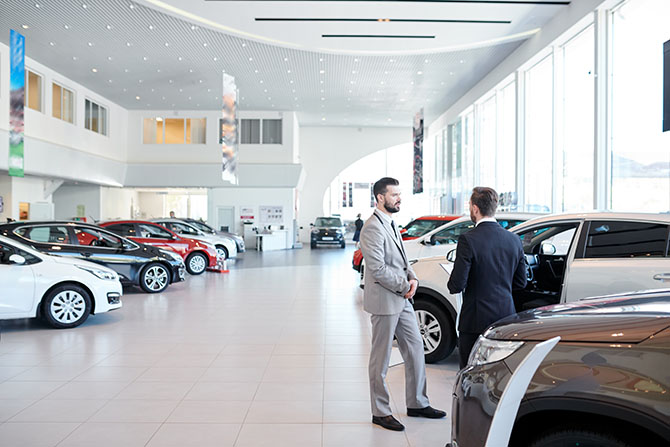In today’s fast-paced world, consumer expectations are rapidly evolving, and industries are tasked with adapting to these changing preferences. It has been commonly stated during the last decade that a business still using a fax machine is easy prey for disruptors. In today’s modern automotive dealership landscape, dated websites with poor user interfaces and no ability to transact digitally are becoming the new fax machines. Consumers now demand a seamless digital experience with much greater transparency in their deals. This shift in consumer behavior has paved the way for innovative solutions that enable dealers to gain a competitive edge by redefining the way they engage with consumers.
Embracing Transparency: A New Standard in Consumer Expectations
Transparency has become a cornerstone of consumer trust and satisfaction. In the realm of automotive transactions, consumers now seek more open communication, readily available information and straightforward processes. Traditional dealer practices that once thrived on mystery and negotiation are rapidly losing ground. Modern consumers value clarity, fairness and the ability to make informed decisions at their own pace.
Dealers who embrace transparency are finding success by offering detailed pricing breakdowns. When consumers feel empowered with accurate and comprehensive data, they are more likely to develop trust to refer friends and maintain long-lasting relationships with dealerships.
The Digital Revolution: Transforming Auto Purchases
The digital era has ushered in a new age of convenience where consumers expect to access products and services with just a few clicks. This shift in behavior has given rise to the demand for a seamless, digital buying experience in the automotive industry. Consumers want the ability to research their options and secure a deal online at their own leisure.
Dealerships that invest in user-friendly websites, intuitive mobile apps and online tools for browsing inventory and calculating payments, are gaining a competitive edge. With digital platforms, consumers can explore their options, personalize their choices and gather information without the pressure of traditional in-person interactions.
A customer should be able to browse inventory, get prequalified, explore financing options, get multiple instant credit offers, get hard or soft instant trade offers from dealer controls, shop for vehicle-specific accessories, evaluate F&I offerings, schedule appointments, obtain property and casualty insurance and upload documents. And they should be able to do it all from the comfort of their own home or in the showroom, on desktop, tablet or mobile.
Multichannel vs. Omnichannel
The key difference between omnichannel and multichannel is the focal point of your marketing strategy. Omnichannel marketing takes a customer-centric approach while using all available media channels. Multichannel takes a product-centric approach while using more than one channel to promote the product or service.
In the last 20 years, dealers added the sales channels of the Business Development Center (BDC) and the e-commerce website. The dealership has become a multichannel sales operation, especially with the addition of true digital retailing tools to the website. However, regardless of industry, multichannel operations are disjointed. Omnichannel is a synchronized system that reaches the customer through multiple channels.
The Problem with Multichannel: Different software platforms result in a lack of consistency in deal presentation to the customer. Trade values, prices, incentives, and payments don’t match, and customers feel like they get the runaround.
The Band-Aid: Dealers limit the capability of the BDC and website to force every deal through the showroom. This need not be the case.
The Solution: Have omnichannel-capable digital retailing. The digital retailing platform must have the vision of delivering a seamless and consistent customer experience across all customer touchpoints and across in-store, mobile and online.
Some key enabling features for a synchronized, omnichannel digital retailing tool include showroom kiosk and tablet mode and resume online deals in the showroom and vice-versa; additionally, the BDC will start a deal and send it to the customer, identify the salesperson and integrate with the CRM.
Conclusion: Adapting for a Bright Future
As the automotive industry continues to evolve, dealerships must adapt to changing consumer expectations. Transparency, digitalization and omnichannel platforms are reshaping the landscape, creating an environment where consumers are in control and empowered to make well-informed decisions. By embracing these shifts and meeting consumers on their own terms, dealerships can build trust, foster loyalty and thrive in this new era of auto sales. The future belongs to those who listen to the consumer’s call for change and innovate accordingly.
At the forefront of this consumer-driven revolution is WebBuy with its omnichannel solution — an innovative platform that’s changing the way dealers engage with their customers. WebBuy recognizes the desire for transparency and a digital shopping experience. The omnichannel digital retailing experience WebBuy provides empowers dealers to provide customers with the ability to work on every step of their deal in the most user-friendly online purchasing journey possible. Call us today for more information at (406) 313-6600 or visit webbuy.com.












